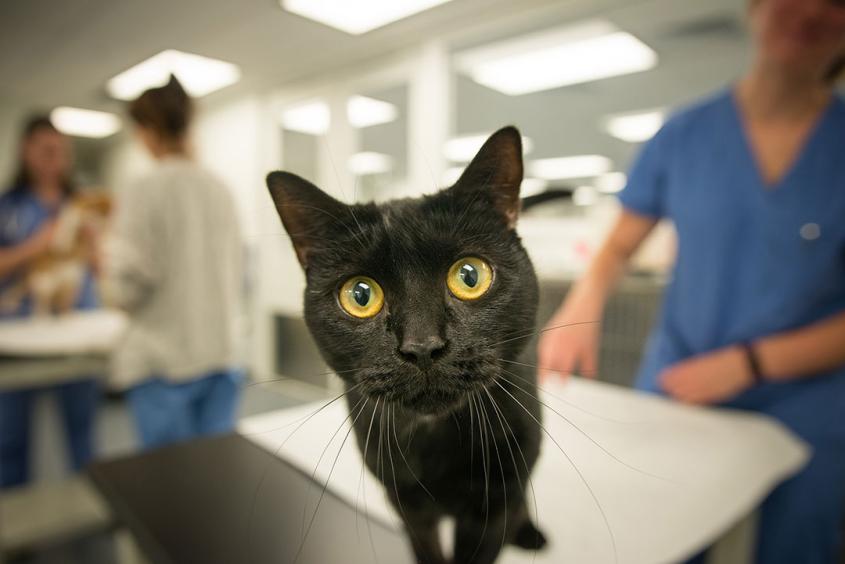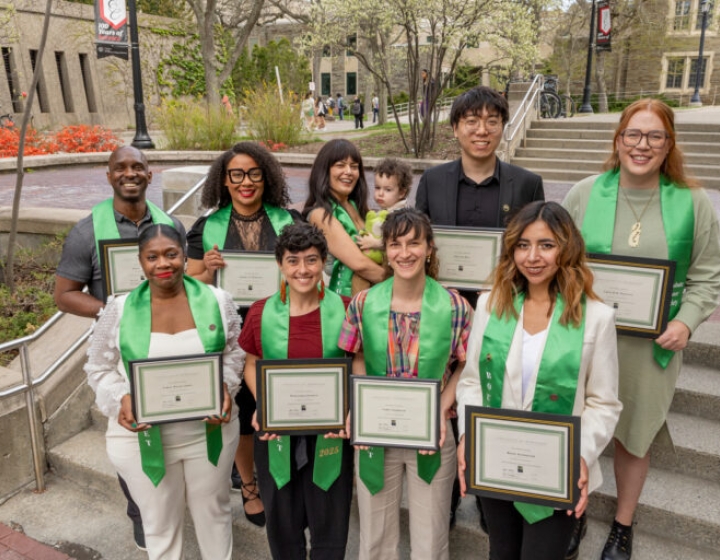Cornell’s first spay day sees high participation from community
The focus was feline during the College of Veterinary Medicine’s first participation in World Spay Day. Volunteer veterinary students and supervising professionals performed 42 cat spay procedures and 36 neuters during the Feb. 23 event. The total of 78 surgeries exceeded their original goal of 50 cats served.
“Spay Day was a huge success and is one of the many ways Cornell is a great resource for our community,” said Evice Bolton, who organized the event with fellow third-year student Emily Gerardi.
Spay and neuter services reduce animal overpopulation, particularly stray animals and in underserved communities. Clinics like this weekend’s are in high demand across the state. “Within 12 hours of advertising the event through the Southside Healthy Pet Clinic, over 100 people inquired about getting their cats fixed,” said Gerardi.
The Cornell students worked to provide spay and neuter services to the Ithaca community, as well as rabies vaccines and preventatives at no cost to owners during the event. They also treated a number of feral cats, which rescues and other members of the public trapped and released.
Created as Spay Day USA by the Doris Day Animal League in 1995, World Spay Day is now a campaign of the Humane Society of the United States. The society offers grants to those interested in participating as part of its mission to provide spay/neuter services for communities as well as learning opportunities for veterinary students. Bolton and Gerardi applied for and won the grant that made this year’s event at Cornell possible.
“Without support from the Humane Society, we wouldn’t have been able to make this event a reality and help so many cats and their families,” said Bolton. “Our hope is to make this a regular event in the future to help with cat overpopulation in our area.”
In addition to serving the community, the event also offered veterinary students a chance to gain more practice with surgical and anesthetic skills while under the supervision of Cornell doctors and technicians. Ten students performed the surgeries, 18 provided physical exams and anesthesia, and four recovered the cats following their procedures – each training in techniques specific to the high-quality, high-volume spay/neuter model regularly practiced by Cornell outreach teams.
“This is experience that veterinary students may not otherwise be exposed to,” said Dr. Paul Maza, Cornell veterinary faculty, director of FARVets and one of the supervising veterinarians. “An event like this encourages practical learning and bolsters student confidence.”

Other supervising professionals who donated their time included Drs. Stephanie Hon; Leni Kaplan ’91; Jami Landry, D.V.M. ’17; Erika Militana, D.V.M. ’16; Sue Yanoff ’77, D.V.M. ’80; and licensed veterinary technicians Manny McGovern and Tesla Rich.
Bolton said that despite being the college’s first time organizing an event for World Spay Day, everything came together smoothly. “The best part of this clinic was seeing everyone work together to make it happen,” she said. “We were only able to accomplish so much because of the amazing team we had. Everyone worked together well and had such great attitudes.”
By Melanie Greaver Cordova






